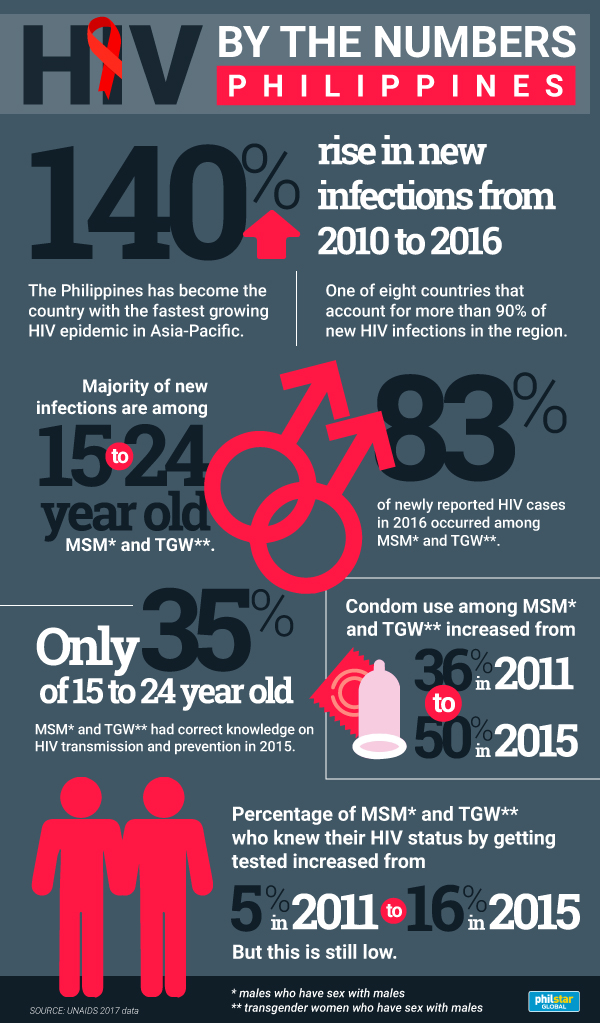Report: Philippines has fastest growing HIV epidemic in Asia Pacific

A UNAIDS report showed that the number of new HIV infections in the Philippines increased from 4,300 in 2010 to 10,500 in 2016. STAR/Miguel De Guzman, file
MANILA, Philippines — The Philippines has become the country with the fastest growing human immunodeficiency virus epidemic in the Asia Pacific region, according to a report from the Joint United Nations Programme on HIV/AIDS or UNAIDS.
The UNAIDS report showed a 140-percent increase in the number of new infections in the Philippines for the past six years from an estimated 4,300 in 2010 to around 10,500 in 2016.
The Philippines has become one of the eight countries accounting for more than 90 percent of new HIV infections in Asia and the Pacific. The number of new infections in the country, however, is not as high as several countries in the region which have tens of thousands of new infections every year.
Eamonn Murphy, Director of UNAIDS Regional Support Team for Asia-Pacific, said that the Philippines has a "small window of opportunity" to act on the epidemic.
"If HIV programming is re-directed to focus on the people most at risk and where they are located, I’m sure the country can not only return to a stable situation but even end the AIDS epidemic as a public health threat by 2030," Murphy said.
In 2016, 83 percent of new HIV cases occurred among males who have sex with males (MSM) and transgender women who have sex with males (TGW). Majority of these infections were reported among 15- to 24-year-old MSM and TGW, according to Philippine data.
Data also showed that condom use among MSM and TGW jumped from 36 percent in 2011 to 50 percent in 2015.
Only 35 percent of MSM and TGW aged 15 to 24 had correct knowledge on HIV transmission and prevention. Meanwhile, the number of MSM and TGW who were aware of their HIV status by getting tested increased from 5 percent in 2011 to 16 percent in 2015, which is still relatively low.

UNAIDS noted that the Philippine government has retooled its program to expand HIV services for MSM and TGW, focusing in 117 cities where 80 percent of new infections have been reported.
The government has increased funding for the HIV program between 2013 and 2015. The Department of Health is now providing free antiretroviral medicine to anyone who tests positive for HIV and other out-patient services to a maximum of P30,000 per person annually.
The DOH has three HIV treatment hubs in Metro Manila—Research Institute for Tropical Medicine, San Lazaro Hospital and Makati Medical Center.
The report also noted that local governments have provided and implemented innovative HIV prevention services such as three clinics in Quezon City which provide HIV testing and counseling.
Health Secretary Paulyn Jean Rosell-Ubial said that HIV is one of the top health priorities for the government.
"The Department of Health, together with the Philippine National AIDS Council, other government agencies, local government units, and partner civil society groups is determined and committed to halt the increase in the number of cases and start reversing the trend of the epidemic in five years," she said. — Patricia Lourdes Viray
- Latest
- Trending
































